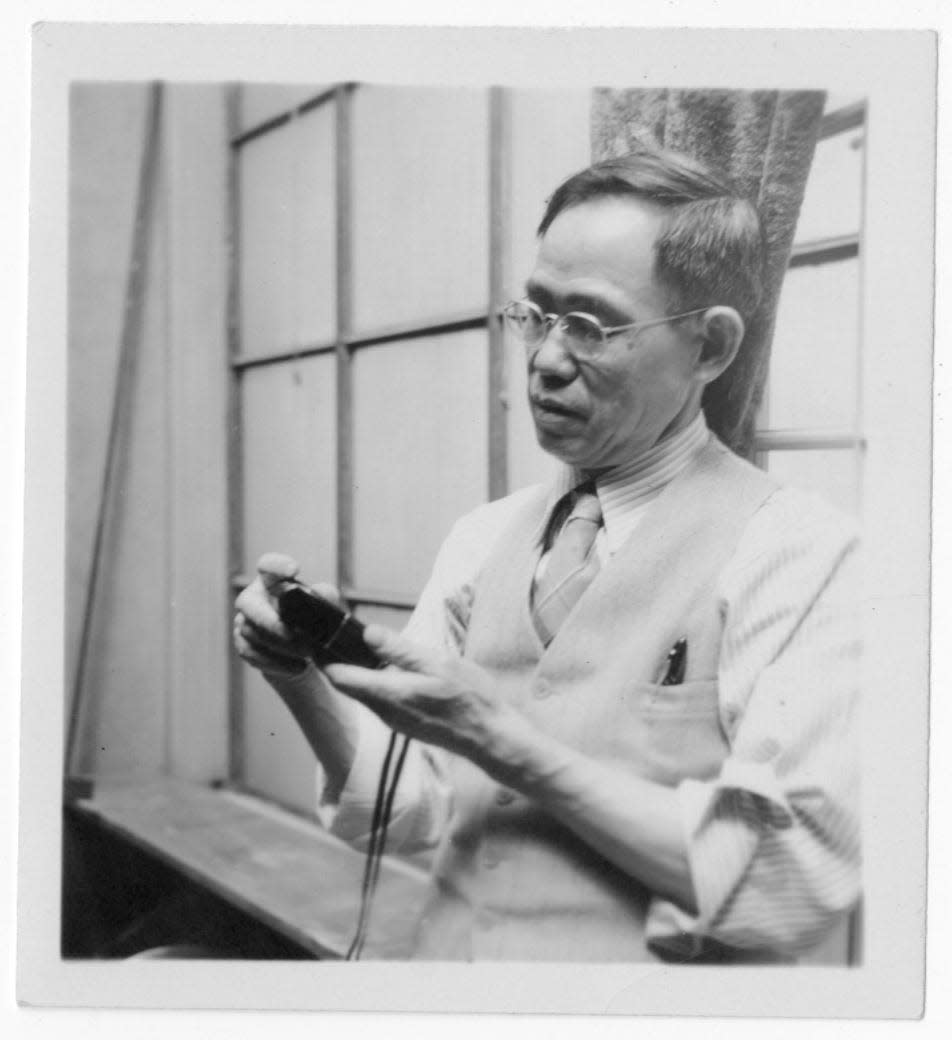5 things to know about the new Frank Muramoto exhibit at El Pueblo History Museum

El Pueblo History Museum is opening a new exhibit at the end of the month featuring photographs from a Japanese immigrant who lived in Pueblo for decades.
Here are five things to know about the artist and upcoming exhibit.
Meet the featured artist, Frank Muramoto
Frank “Duke” Denichi Muramoto was born in Japan and lived in Pueblo from 1912 until he died in 1958.
Muramoto owned and operated the De Luxe photo studio in Bessemer. Most of Pueblo’s Japanese community in the early 1900s, which numbered approximately 400 in 1907, lived in Bessemer, according to a virtual exhibit about Muramoto on display through the Pueblo City-County Library District.
Why Muramoto’s photography is unique
Muramoto took portraits professionally, but also took photos on vacations and candid shots of friends and family.
His photographs were taken at a time before cameras were widespread and equipment was clunky, said Devin Flores, a digital content specialist for History Colorado.
“It's pretty atypical to see so many candid photographs, and things like his nature photography, especially because he was not professionally a nature photographer,” Flores said. “In his spare time, he was carrying very heavy camera equipment with him on hikes and on vacation all over Colorado. It definitely is not the typical story.”
Maramuto kept up with the evolving technology of cameras and experimented with new techniques and color film before it was widely used. The collection includes some color film footage — no stills — from the 1930s.
Big Hollywood studios started producing films in color, most notably with the release of the Wizard of Oz in 1939, but the cost was so high that color film did not become the norm for movies until the 1960s, Flores said.
What happened with Japanese internment
In the aftermath of the Japanese attack on Pearl Harbor, most Japanese-Americans were forced to move to internment camps.
Muramoto was exempt from the order, according to the virtual library exhibit. Colorado’s governor at the time, Ralph Carr, opposed Japanese internment, but also was criticized for supporting hosting a Japanese internment camp in Colorado: a camp was opened near the town of Grenada at what is now the Amache National Historic Site.
Why is this exhibit opening now?
The library district previously featured Muramoto’s recently digitized video in an online exhibit that debuted in 2021. The library’s work to digitize Muramoto’s films, which feature unique text cards interspersed through the footage, was supported by a grant from the National Film Preservation Foundation.
“This exhibition is a chance to explore an undertold story of immigration to Colorado,” Flores said in a news release. "Through Muramoto’s lens, the audience gets a unique perspective on the diverse people, communities, cultures, and landscapes of southern Colorado, as seen by a first-generation immigrant.”
The exhibit captures the lives of Pueblo’s Japanese and East Asian immigrant community, Flores told the Chieftain.
“There was a very strong and surprisingly large community of not just Japanese, but other East Asian immigrants in southern Colorado at this time period, and while there are still remnants of that community, they are harder and harder to find every year, simply because a lot of them moved out of Pueblo,” Flores said.
How to see the exhibit
The exhibit opens April 29 in the free gallery at the El Pueblo History Museum. A variety of Muramoto’s work will be on display, including portraits of himself, his family and his community.
A selection of Muramoto’s films will be on display at the museum, as well as an oral history with the artist’s grandson, Dave Muramoto.
The exhibition will continue until late July, Flores said.
El Pueblo History Museum is located at 301 N. Union Ave. and is open from 10 a.m. to 4 p.m. Monday through Saturday.
The Muramoto exhibit is in the free community gallery. Admission to the rest of the museum’s exhibits is free for youth 18 and under, $7 for adults and $5 for seniors over the age of 60, as well as veterans.
Anna Lynn Winfrey is a reporter at the Pueblo Chieftain. She can be reached at awinfrey@gannett.com or on Twitter, @annalynnfrey.
This article originally appeared on The Pueblo Chieftain: What to know about the new Muramoto photography exhibit at El Pueblo

